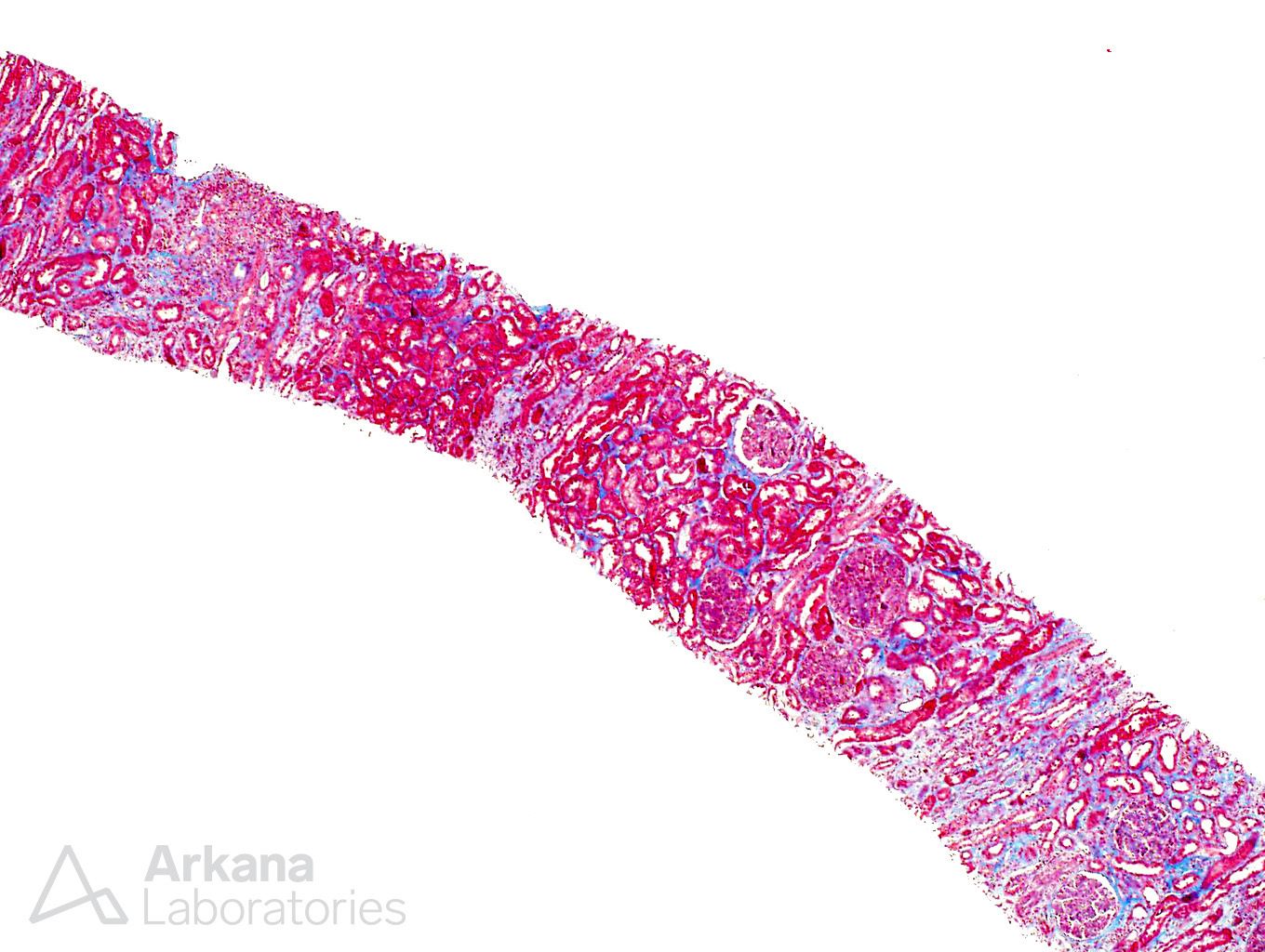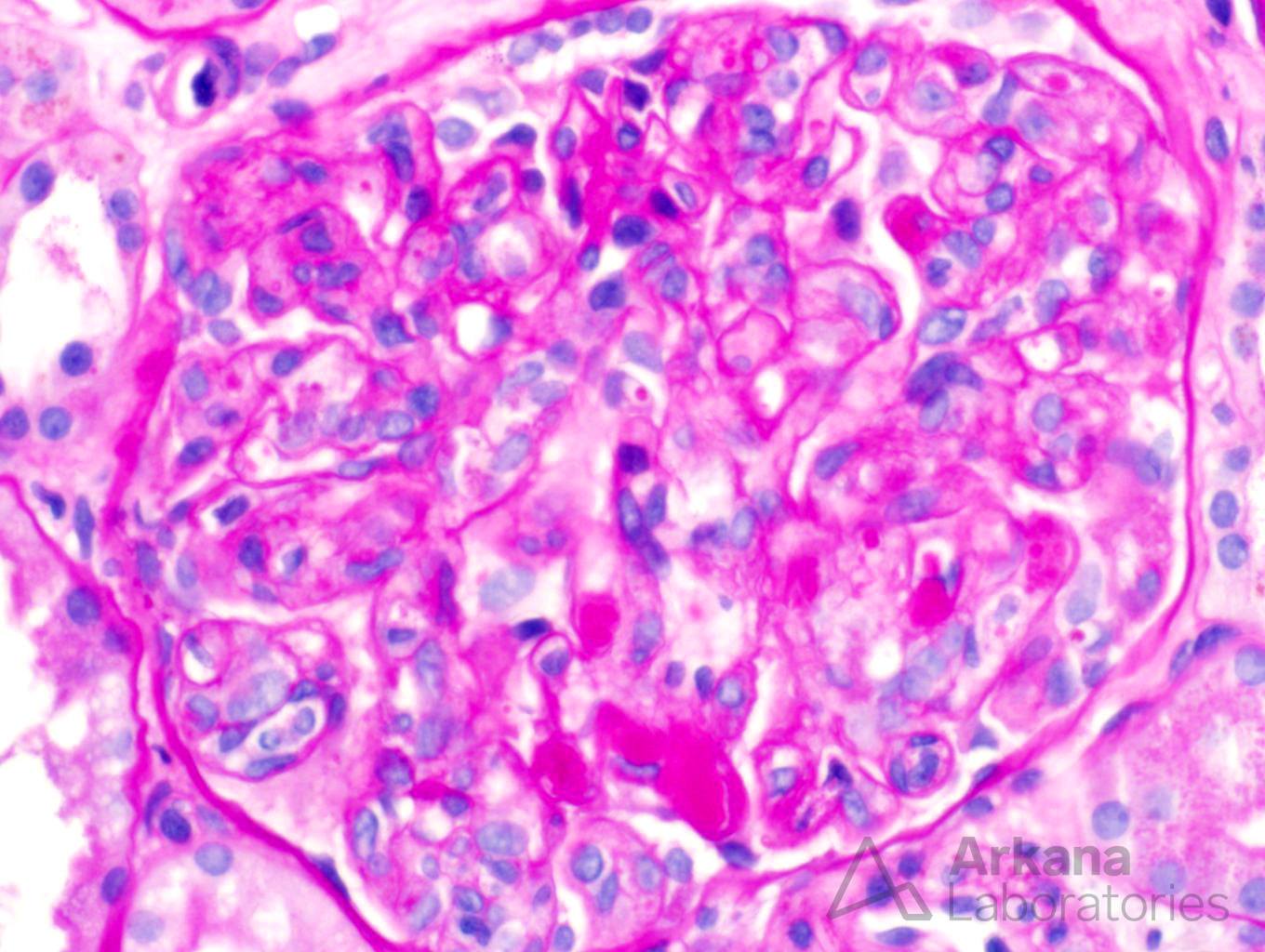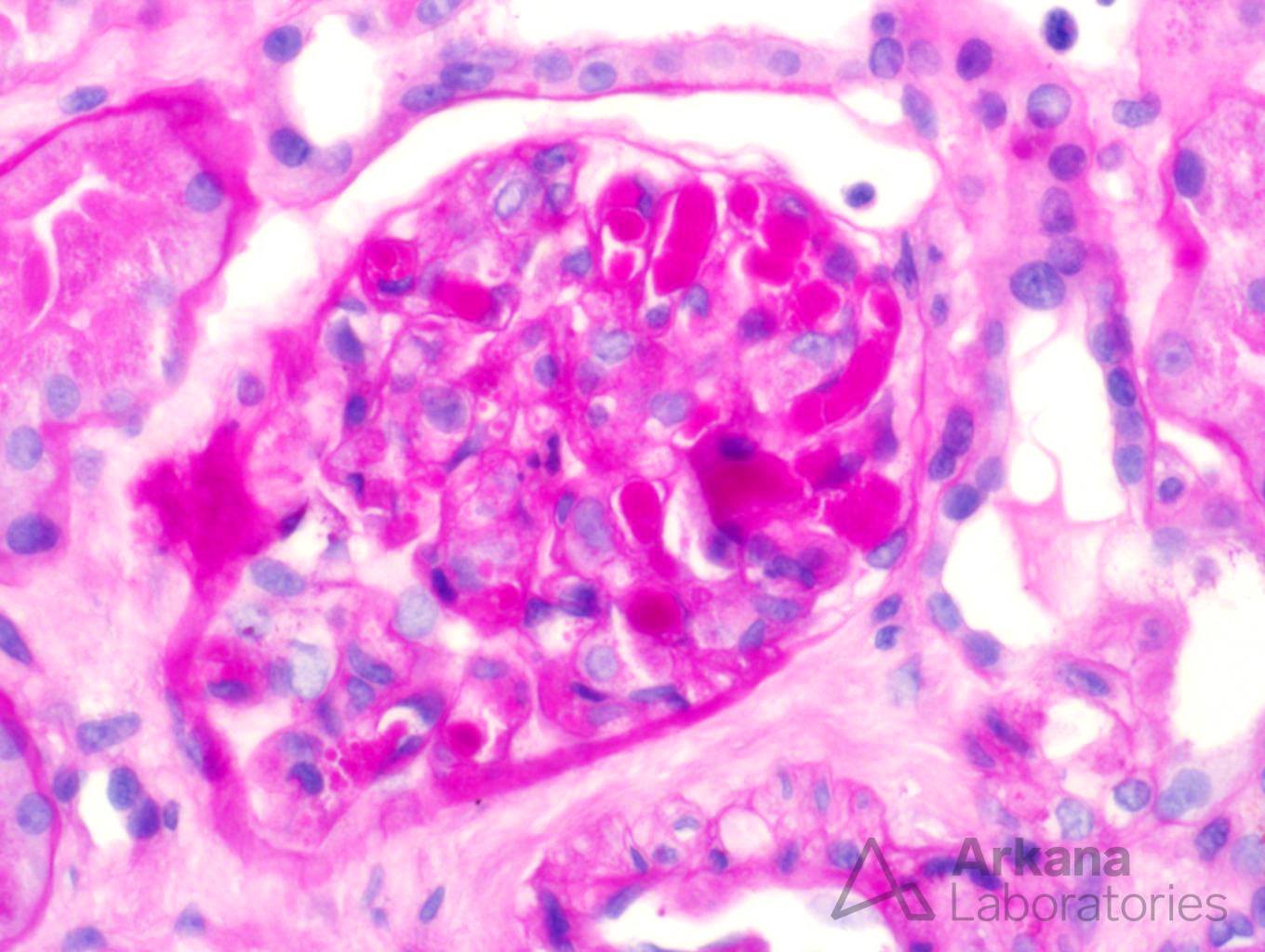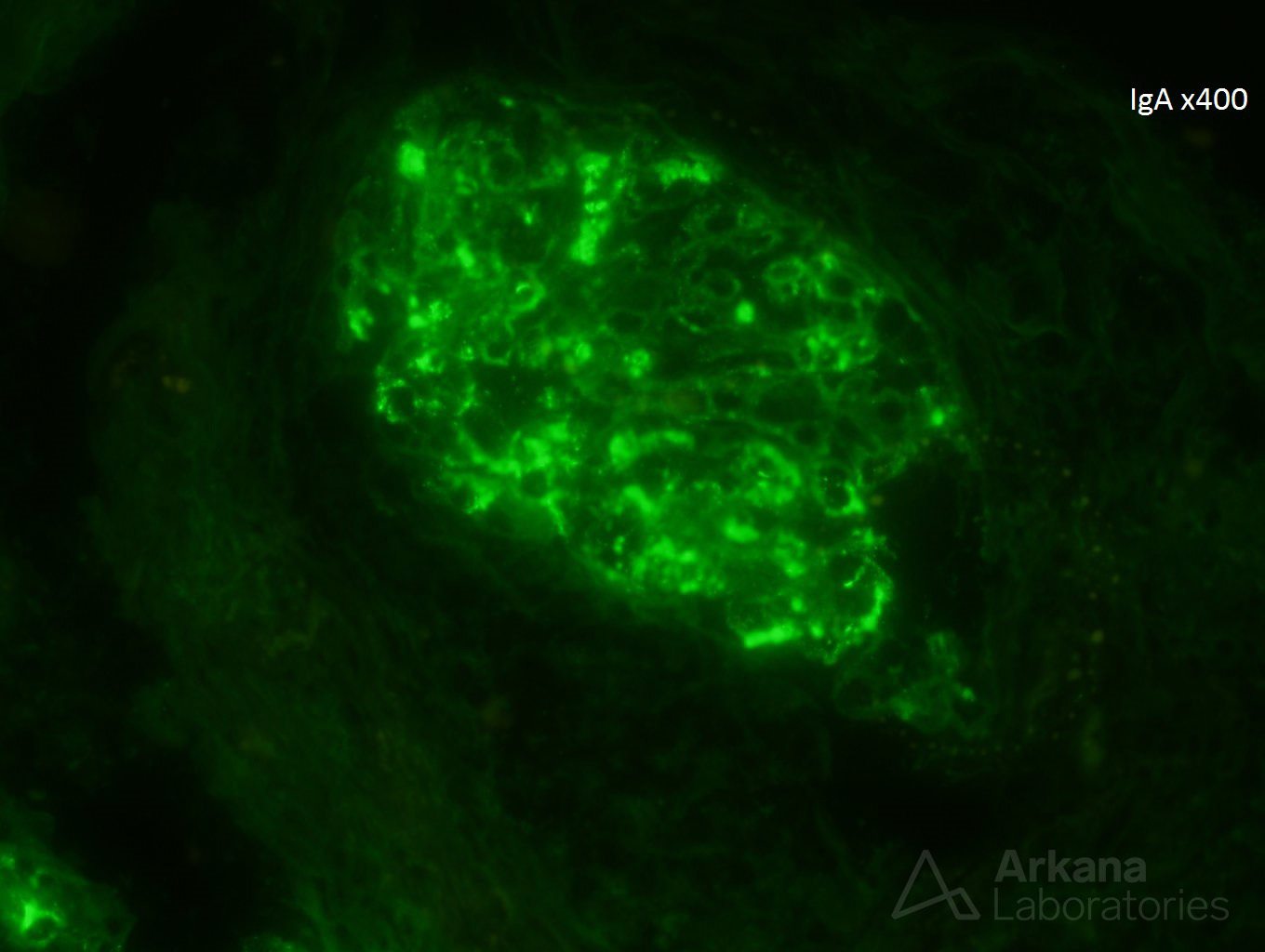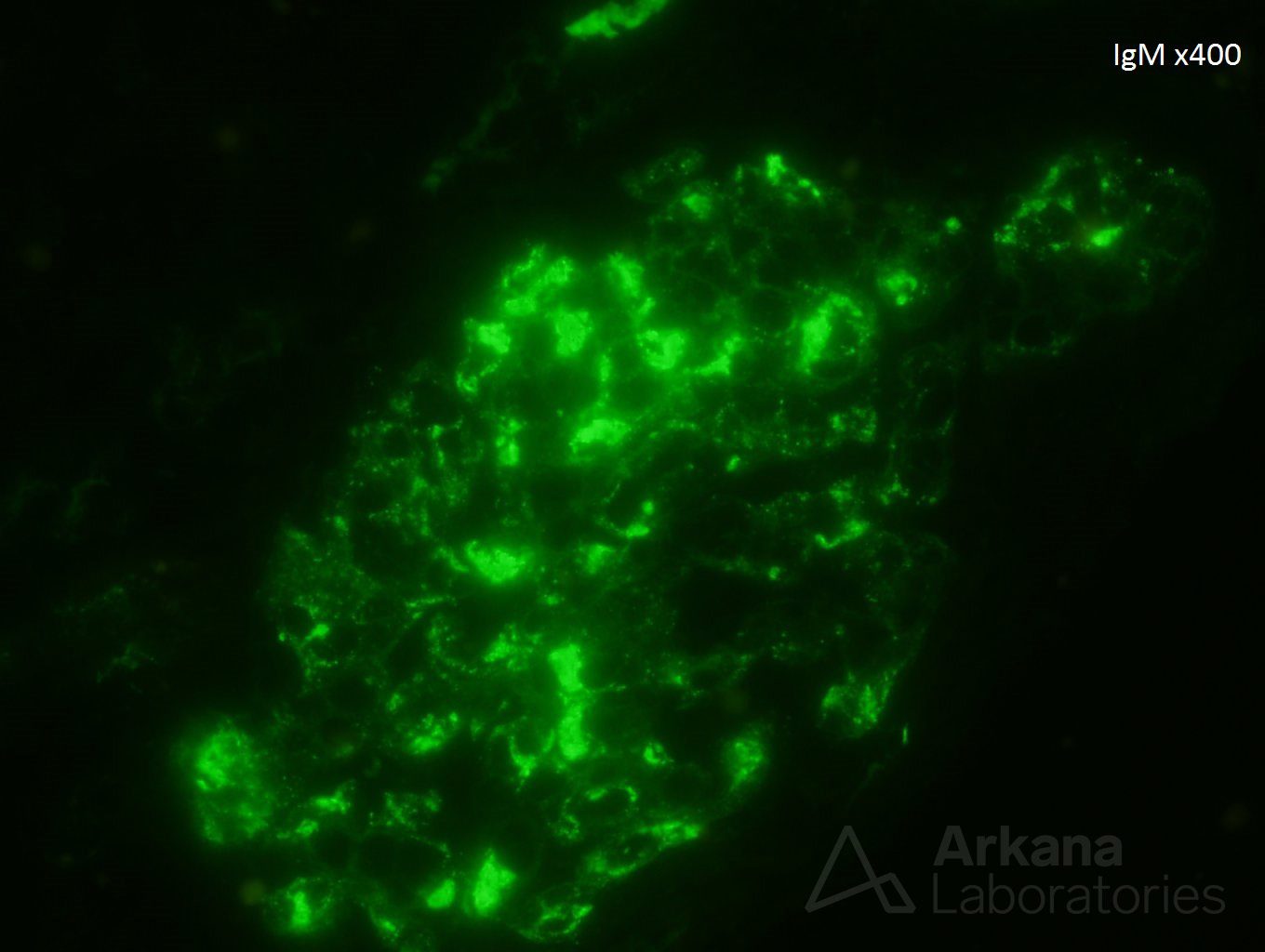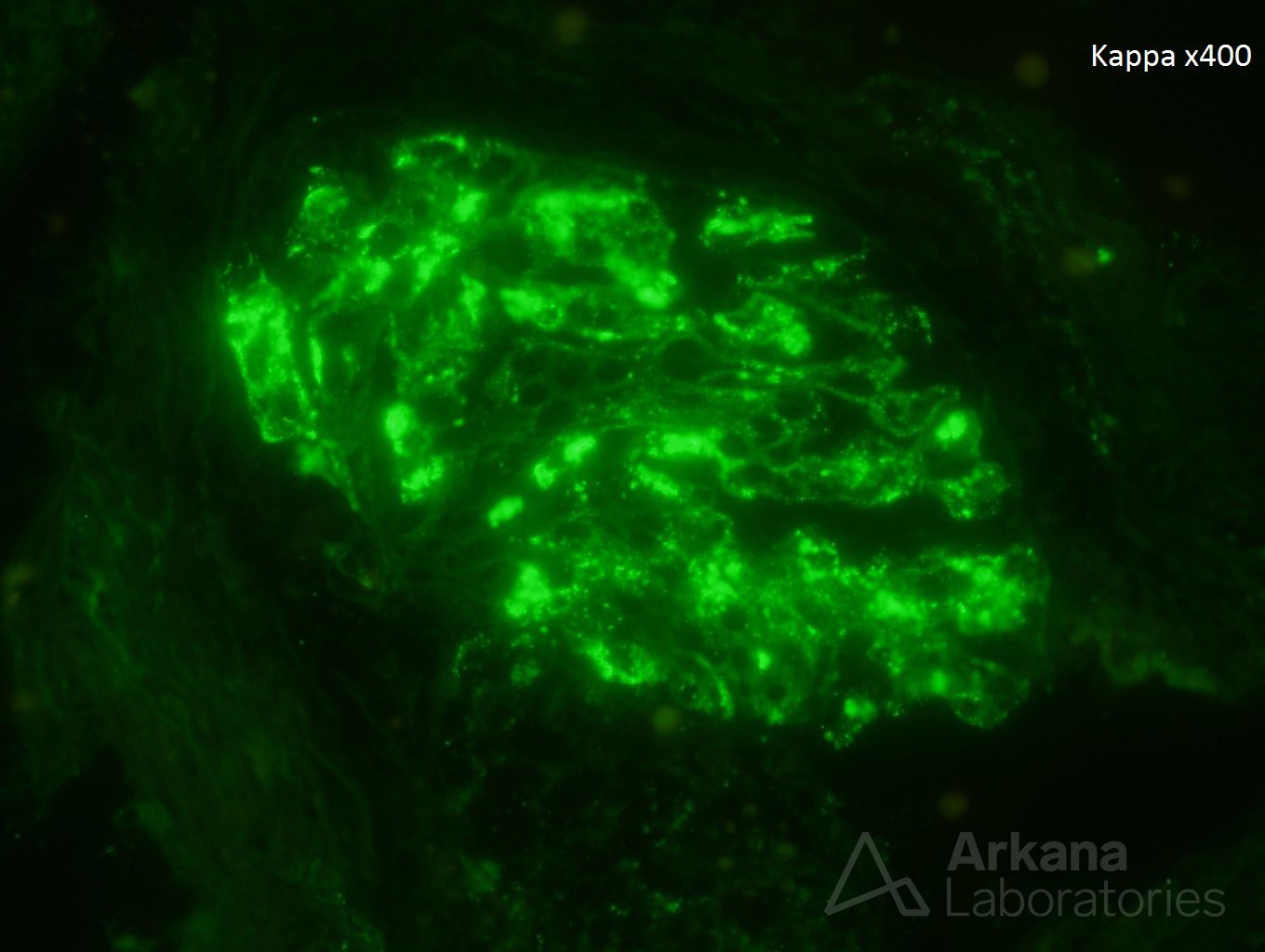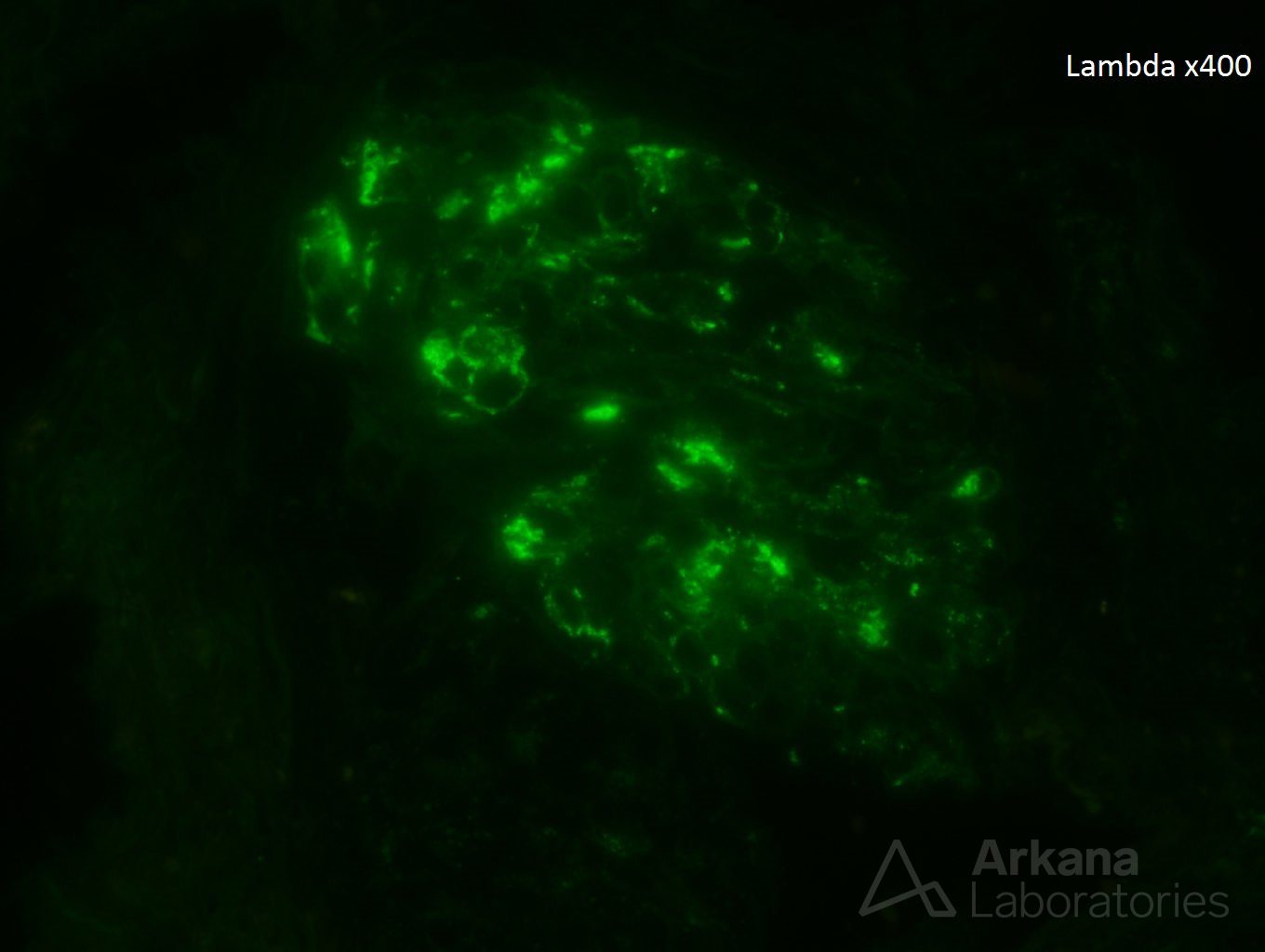A 70-year-old female presents with 8 grams of proteinuria and a creatinine of 2.1. She relays that she has noticed a gradual increase in swelling over the last 6 months. She denies NSAID use and any new exposures.
What is the best diagnosis?
A. Cryoglobulinemia
B. IgA Nephropathy
C. Post-infectious Glomerulonephritis
D. Thrombotic Microangiopathy
The best answer is A – cryoglobulinemia.
The photographs show membranoproliferative glomerulonephritis with numerous hyaline thrombi. The hyaline thrombi stain for IgM, IgA, kappa, and lambda. The best diagnosis is cryoglobulinemia. IgA nephropathy is a consideration, but IgA nephropathy typically has mesangial staining and usually no hyaline thrombi. Post-infectious glomerulonephritis is an exudative glomerulonephritis that has subepithelial humps by EM, but no hyaline thrombi. Thrombotic microangiopathy displays a different glomerular pattern of injury and has acellular closure of capillary walls, mesangiolysis, and no hyaline thrombi.
Quick note: This post is to be used for informational purposes only and does not constitute medical or health advice. Each person should consult their own doctor with respect to matters referenced. Arkana Laboratories assumes no liability for actions taken in reliance upon the information contained herein.
